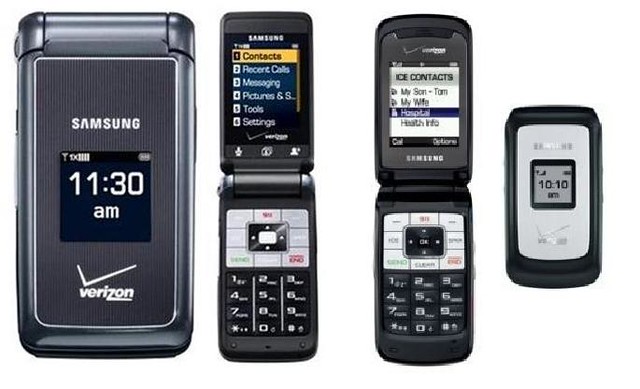In the ever-evolving world of mobile technology, the Verizon Jitterbug phone once held a special place. It was designed specifically for seniors, offering simplicity, large buttons, and essential features, all while operating on Verizon’s reliable network. However, the landscape of senior-friendly phones has shifted in recent years. This exclusive article delves into the history of the Verizon Jitterbug phone, its features, benefits, and the reasons behind its discontinuation. We will also explore the current alternatives available for seniors on the Verizon network and the evolving trends in mobile technology for older adults.
The Rise of the Jitterbug Phone: A Solution for Senior Connectivity
The Jitterbug phone, developed by GreatCall (later acquired by Lively), was introduced in the early 2000s as a solution to the growing need for simple and user-friendly mobile phones for seniors. Recognizing that many older adults struggled with the complexity of traditional cell phones, the Jitterbug phone was designed with their unique needs in mind.

Key Features of the Jitterbug Phone:
- Large Buttons and Clear Display: The Jitterbug phone featured oversized buttons and a bright, high-contrast display, making it easier for seniors with vision or dexterity impairments to use.
- Simple Interface: The phone’s menu system was designed to be intuitive and easy to navigate, with limited options and clear instructions.
- Dedicated “Operator” Button: The Jitterbug phone included a dedicated “Operator” button that connected users directly to a live operator for assistance with any questions or concerns.
- Urgent Response Button: Some Jitterbug models featured an Urgent Response button that could be used to connect users with emergency services or a 24/7 health and safety helpline.
- Medical Alert System Integration (Optional): Certain Jitterbug models could be integrated with a medical alert system, providing seniors with an added layer of safety and security.
The Verizon Jitterbug Partnership: Bridging the Digital Divide
Verizon partnered with GreatCall to offer the Jitterbug phone on its network, providing a valuable option for seniors who sought a simple and reliable mobile phone. This partnership allowed Jitterbug to leverage Verizon’s extensive network coverage and reliable service, ensuring that seniors could stay connected with their loved ones, access emergency services, and enjoy the benefits of mobile technology.
The Verizon Jitterbug collaboration was a success, with many seniors adopting the device as their preferred mobile phone. However, as technology continued to advance, the demand for smartphones with more advanced features grew, and the Jitterbug phone eventually faced stiff competition from newer devices.
The Discontinuation of the Verizon Jitterbug Phone: A Shift in the Market
In 2019, GreatCall was acquired by Best Buy, and the Jitterbug phone was rebranded as Lively. While the Lively brand continues to offer simple and user-friendly phones, it is no longer exclusively available through Verizon. This decision was likely influenced by several factors:
- Growing Demand for Smartphones: The increasing popularity of smartphones among seniors led to a decline in demand for basic phones like the Jitterbug.
- Focus on 5G Technology: Verizon’s focus shifted towards expanding its 5G network and offering more advanced smartphones that could leverage this new technology.
- Competitive Landscape: The emergence of other senior-friendly phone options from different carriers and manufacturers led to increased competition in the market.
Current Alternatives to the Verizon Jitterbug Phone
While the Verizon Jitterbug phone is no longer available, Verizon continues to offer several options for seniors seeking simple and user-friendly phones:
- Verizon Prepaid Flip Phones: Verizon offers a selection of basic flip phones with large buttons, simplified menus, and long battery life. These phones are designed for those who prioritize simplicity and affordability.
- Affordable Smartphones: Verizon also offers a range of affordable smartphones with user-friendly interfaces and essential features. These phones can be a good option for seniors who want to access basic internet functions and apps but prefer a simpler experience than a flagship smartphone.
- Accessibility Features: Many Verizon phones come with built-in accessibility features, such as larger fonts, text-to-speech, and hearing aid compatibility, making them suitable for seniors with specific needs.
Choosing the Right Verizon Phone for Seniors
Selecting the right Verizon phone for seniors involves considering various factors:
- Ease of Use: Look for phones with large buttons, simplified menus, and a clear display.
- Durability: Consider a rugged phone if the user is prone to accidental drops or spends time outdoors.
- Battery Life: Opt for a phone with long battery life to avoid frequent charging.
- Features: Think about the features that are most important to the user, such as a camera, GPS, or hearing aid compatibility.
- Budget: Determine your budget for both the phone and the monthly plan.
The Future of Senior-Friendly Phones on Verizon
As technology continues to evolve, we can expect to see even more innovative and user-friendly phones designed specifically for seniors. These devices may incorporate features like voice commands, artificial intelligence, and enhanced accessibility options to cater to the changing needs of older adults. Verizon is likely to continue offering a range of senior-friendly devices and plans, ensuring that this demographic remains connected and empowered in the digital age.
Conclusion
While the Verizon Jitterbug phone may be a thing of the past, its legacy lives on. The demand for simple, reliable, and affordable phones for seniors remains strong, and Verizon continues to cater to this need with its current offerings.
By carefully considering your needs, preferences, and budget, you can find the perfect Verizon phone and plan to stay connected, informed, and engaged in today’s digital world.
لا تعليق